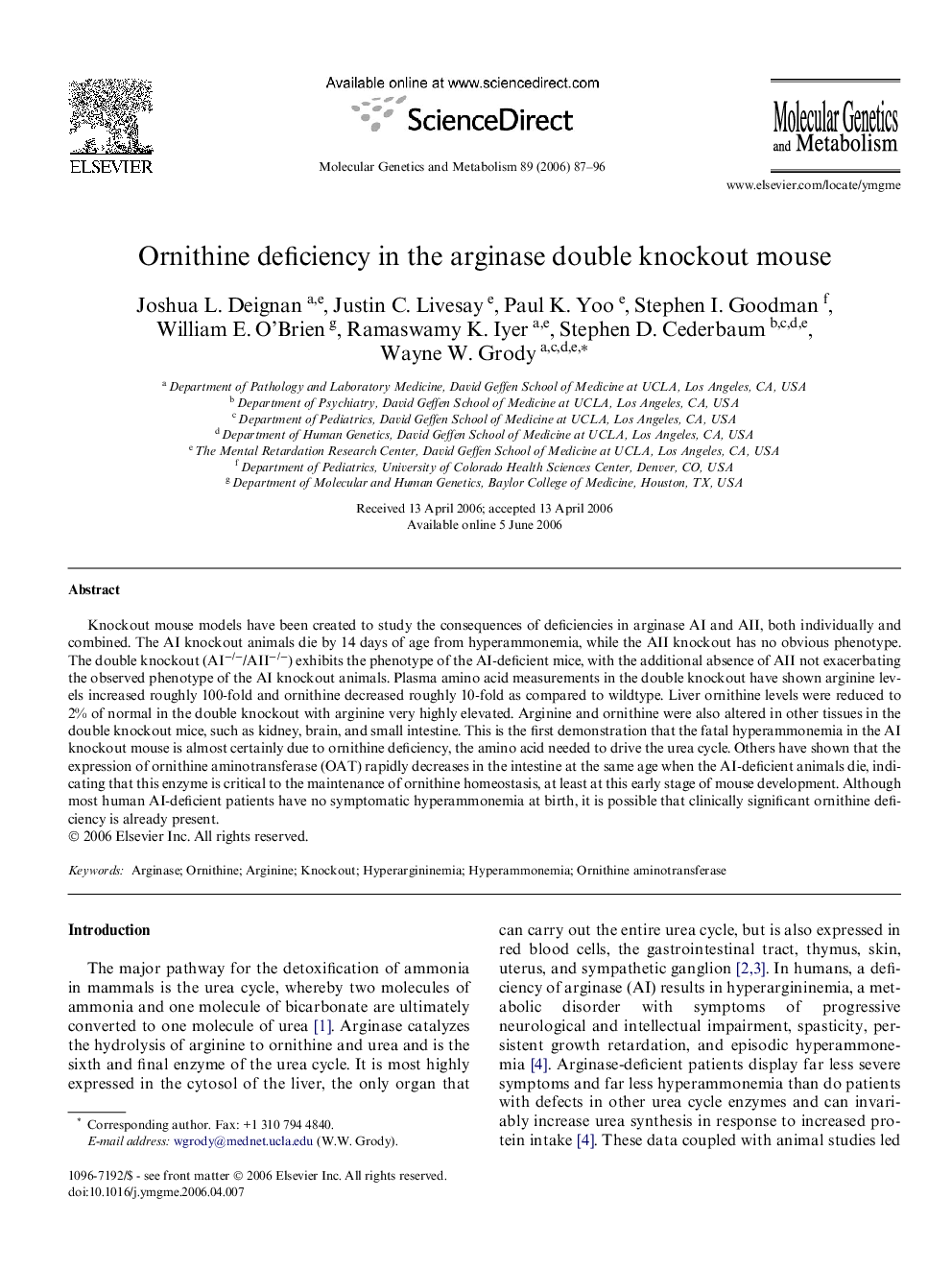| Article ID | Journal | Published Year | Pages | File Type |
|---|---|---|---|---|
| 2000294 | Molecular Genetics and Metabolism | 2006 | 10 Pages |
Knockout mouse models have been created to study the consequences of deficiencies in arginase AI and AII, both individually and combined. The AI knockout animals die by 14 days of age from hyperammonemia, while the AII knockout has no obvious phenotype. The double knockout (AI−/−/AII−/−) exhibits the phenotype of the AI-deficient mice, with the additional absence of AII not exacerbating the observed phenotype of the AI knockout animals. Plasma amino acid measurements in the double knockout have shown arginine levels increased roughly 100-fold and ornithine decreased roughly 10-fold as compared to wildtype. Liver ornithine levels were reduced to 2% of normal in the double knockout with arginine very highly elevated. Arginine and ornithine were also altered in other tissues in the double knockout mice, such as kidney, brain, and small intestine. This is the first demonstration that the fatal hyperammonemia in the AI knockout mouse is almost certainly due to ornithine deficiency, the amino acid needed to drive the urea cycle. Others have shown that the expression of ornithine aminotransferase (OAT) rapidly decreases in the intestine at the same age when the AI-deficient animals die, indicating that this enzyme is critical to the maintenance of ornithine homeostasis, at least at this early stage of mouse development. Although most human AI-deficient patients have no symptomatic hyperammonemia at birth, it is possible that clinically significant ornithine deficiency is already present.
